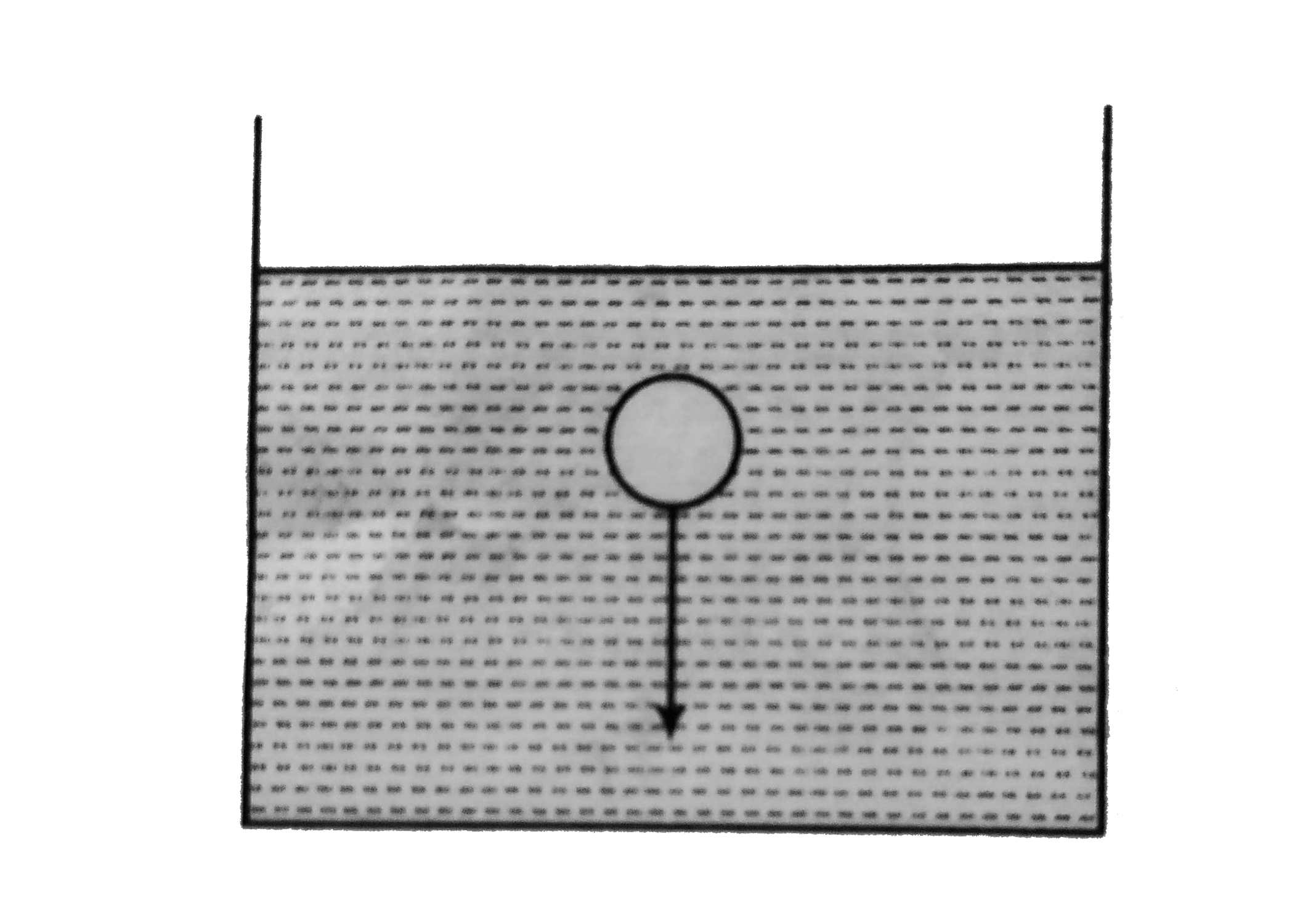A block of volume V and density σb is placed in liquid of density σ1(σ1>σb), then block is moved upward upto a height h and it is still in liquid. The increase in gravitational energy of the block is :
σbVgh
(σb+σl)Vgh
(σb−σl)Vgh
None of these
The correct Answer is:A
To find the increase in gravitational energy of a block of volume V and density σb when it is moved upward to a height h in a liquid of density σ1 (where σ1>σb), we can follow these steps:
Step 1: Understand the Problem
The block is submerged in a liquid and is moved upward. We need to calculate the increase in gravitational potential energy of the block as it is raised to a height h.
Step 2: Calculate the Mass of the Block
The mass m of the block can be calculated using the formula:
m=density×volume=σb×V
Step 3: Write the Formula for Gravitational Potential Energy
The gravitational potential energy U of an object at height h is given by:
U=m⋅g⋅h
where g is the acceleration due to gravity.
Step 4: Substitute the Mass into the Potential Energy Formula
Substituting the expression for mass from Step 2 into the potential energy formula gives:
U=(σb⋅V)⋅g⋅h
Step 5: Simplify the Expression
Thus, the increase in gravitational potential energy when the block is moved upward by height h is:
ΔU=σb⋅V⋅g⋅h
Conclusion
The increase in gravitational energy of the block is:
ΔU=σb⋅V⋅g⋅h
The block is submerged in a liquid and is moved upward. We need to calculate the increase in gravitational potential energy of the block as it is raised to a height h.
The mass m of the block can be calculated using the formula:
m=density×volume=σb×V
The gravitational potential energy U of an object at height h is given by:
U=m⋅g⋅h
where g is the acceleration due to gravity.
Substituting the expression for mass from Step 2 into the potential energy formula gives:
U=(σb⋅V)⋅g⋅h
Thus, the increase in gravitational potential energy when the block is moved upward by height h is:
ΔU=σb⋅V⋅g⋅h
The increase in gravitational energy of the block is:
ΔU=σb⋅V⋅g⋅h
Topper's Solved these Questions
- BOOK - DC PANDEY ENGLISHCHAPTER - PROPERTIES OF MATTEREXERCISE - JEE Advanced57videos
PROPERTIES OF MATTER
- BOOK - DC PANDEY ENGLISHCHAPTER - PROPERTIES OF MATTEREXERCISE - More than one option is correct21videos
PROPERTIES OF MATTER
- BOOK - DC PANDEY ENGLISHCHAPTER - PROJECTILE MOTIONEXERCISE - Level - 2 Subjective10videos
PROJECTILE MOTION
- BOOK - DC PANDEY ENGLISHCHAPTER - RAY OPTICSEXERCISE - Integer type q.14videos
RAY OPTICS
Similar Questions
An object of w and density ρ is submerged in liquid of density σ, its apparent weight will be
View SolutionA body of volume V and desnity ρ is initially submerged in a non-viscous liquid of density σ(>ρ). If it is rises by itself through a height h in the liquid. Its kinetic energy will
View SolutionAn object of mass m is floating in a liquid of density σ. If the object is made up of density ρ, then appare weight of the object in the liquid is
View SolutionA ball of volume V and density ρ1 is moved downwards by a distance 'd' in liquid of density ρ2. Find total change in potential energy of the system.
 View Solution
View SolutionA small ball of density ρ is immersed in a liquid of density σ(>ρ) to a depth h and released. The height above the surface of water up to which the ball will jump is
View SolutionA block of volume V and density ρ is floating in a liquid of density 2ρ filled in a vessel. Now the vesset starts falling freely with acceleration g. Then the volume of block inside the liquid in the falling condition is
View SolutionA needle of length l and density ρ will float on a liquid of surface tension σ if its radius r is less than or equal to:
View SolutionA drop of liquid of density ρ is floating half-immersed in a liquid of density d. If σ is the surface tension the diameter of the drop of the liquid is
View SolutionA liquid of density ρ and surface tension σ rises in a capillary tube of diameter d. Angle of contact between the tube and liquid is zero.
In the above problem, the increase in gravitational potential energy of the liquid due to rise in the capillary is :View SolutionA ball of radius r and density ρ is moving in a liquid of density σ1 and then in a liquid of density simga3. The velocity of the ball remains same in all the three liquids. (Givenσ3>σ2>σ1). If n1,n2andn3 are their coefficients of viscosity , then which of the following is always true ?
 View Solution
View Solution

